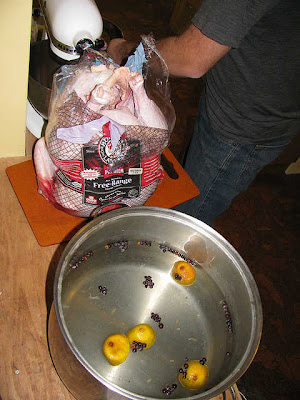Well, let me start by saying I'm trying to make a few "beginning" soft cheese recipes but basically because of Thanksgiving. I have recipes for various pumpkin pies, tortes, etc. and reading through ingredients for scratch pumpkin desserts, they all called for some highly processed milk products: canned condensed milk, heavy or whipping cream (stores only carry ultra-pasteurized yuck), processed cream cheese... none of which I want to use.
So I decided to make my own cream cheese. I can buy non-homogenized whole milk, and heavy cream, from Homestead Creamery and carried by Kroger in the next town south of me. I have no real problem with pasteurized milk (except politically, environmentally and the control/distribution greed factor) although I'd prefer raw milk to make any milk product like cheese.
So, this batch was supposed to be fresh cream cheese, which is apparently not difficult... somewhat like making yogurt. I mixed 2 cups whole milk with 2 cups cream, and heated it to 90ºF. Then I added 2 tablespoons of cultured buttermilk, and covered it. The next step was to add ¼ tablet of Junket rennet or some mesophilic culture, and I could NOT find where I put either of them. They probably eloped together.
So without the rennet or culture, I was actually making sour cream! It will need to be strained because I used half milk and half cream rather than just cream. Most recipes suggest milk and cream for the cream cheese I planned to make, and only plain cream to make sour cream or crème fraîche.
Once the cultured buttermilk is added, it takes from 12-24 hours to thicken, depending on room temperature and how much active culture is in the buttermilk. As you can see in the photo above, it was thick in places, but not consistently thick throughout the mix.
Once the cultured buttermilk is added, it takes from 12-24 hours to thicken, depending on room temperature and how much active culture is in the buttermilk. As you can see in the photo above, it was thick in places, but not consistently thick throughout the mix.
This batch made 20 oz. of lush, rich, fresh sour cream. It is more sour cream than I want or need, given that I just bought some 2 days earlier! Serves me right, for not having mise en place (everything set up before beginning) because then I would have known the rennet or culture was AWOL.
However, I still have enough whole milk and cream remaining to start again to make cream cheese... later. I'll post it separately.


















































